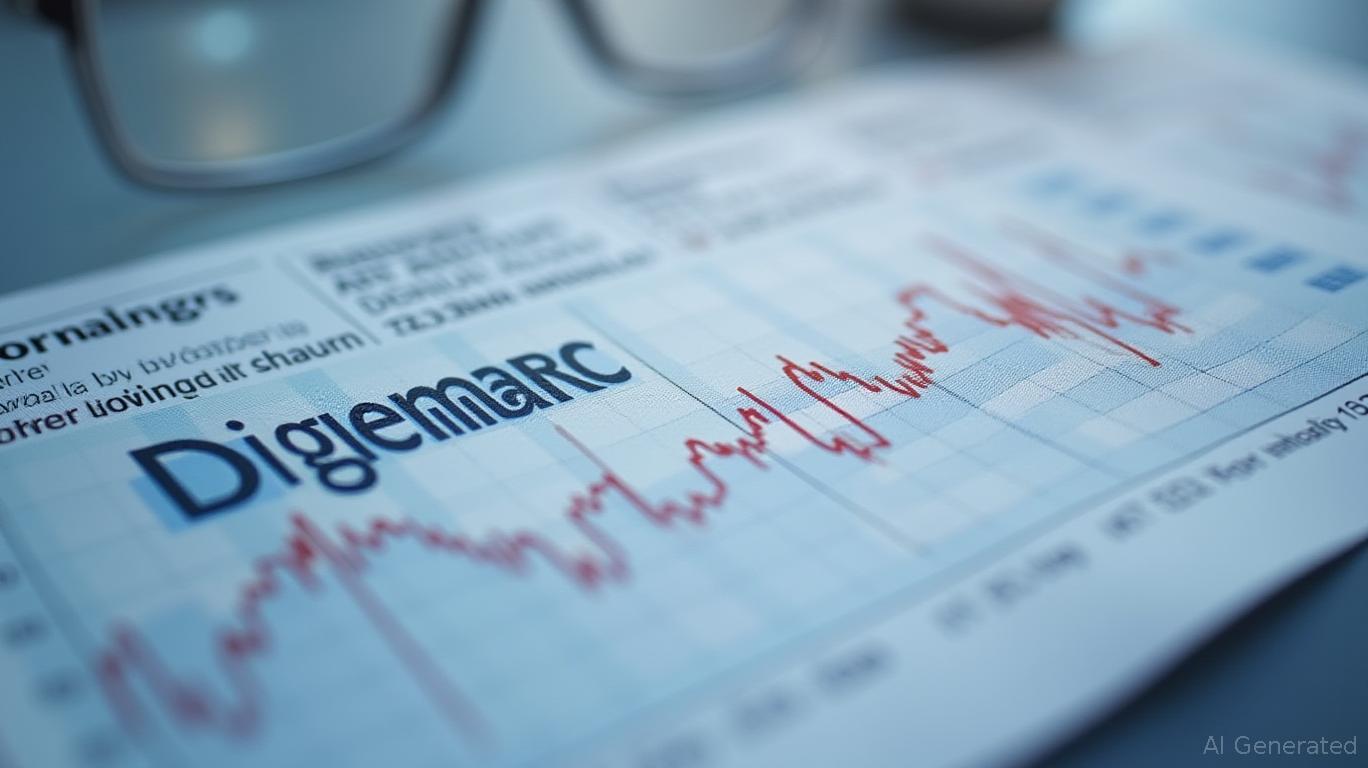Digimarc Corporation (DMRC): Navigating Legal Risks and Stock Recovery Potential
The recent securities lawsuit against Digimarc Corporation (NASDAQ: DMRC) has thrust the company into the spotlight, raising critical questions about its financial transparency and the future of its stock. With allegations of material misstatements and a 43% stock collapse following revelations of contractual missteps, investors face a pivotal decision: hold, sell, or seek compensation through class action participation. This analysis dissects the lawsuit's validity, historical precedents, and the path forward for shareholders.
The Lawsuit's Case for Validity
The core allegations against Digimarc center on its failure to disclose a critical risk: the expiration of a major commercial contract in June 2024. This undisclosed issue led to a renegotiated agreement, resulting in a 10% drop in quarterly subscription revenue (to $5.0 million from $5.6 million) and a $5.8 million decline in annual recurring revenue (ARR) by February 2025.
Key Evidence:
- Digimarc made positive statements about its business prospects during the class period (May 3, 2024–February 26, 2025), despite knowing the contract's uncertain renewal.
- The February 26, 2025, earnings report, which revealed these declines, caused the stock to plunge 43.1% to $15.39, erasing $11.65 in value overnight.
The lawsuit, filed under Sections 10(b) and 20(a) of the Securities Exchange Act, argues that investors were misled about the company's financial stability. With law firms like Levi & Korsinsky—a top-ranked firm in securities litigation—leading the charge, the case carries significant weight.
Historical Context: Can Digimarc's Stock Recover?
While the provided data lacks prior legal precedents for Digimarc, its post-lawsuit performance offers clues.
The stock peaked at $47.36 on January 7, 2025, but began a steady decline in early February. By June 6, 2025, it had dropped to $12.48—a 73% decline from its high—reflecting investor distrust in the company's governance and transparency.
Critical Factors for Recovery:
1. Legal Outcomes: A favorable settlement or ruling could alleviate the overhang of uncertainty. Levi & Korsinsky's track record of recovering “hundreds of millions” for shareholders suggests potential for a substantial payout.
2. Strategic Adjustments: Digimarc's pivot to prioritize authentication technologies (e.g., its Digimarc Illuminate platform) must prove commercially viable to rebuild revenue streams.
3. Governance Reforms: Shareholder activist group Ocho Investments' push for an independent CEO search and governance changes could signal a shift toward accountability.
The July 7, 2025 Deadline: A Strategic Opportunity
Shareholders who purchased DMRC shares during the class period (May 3, 2024–February 26, 2025) have until July 7, 2025, to join the class action. Key considerations:
- No Upfront Costs: The lawsuit operates on a contingency basis, meaning attorneys' fees are paid only if compensation is secured.
- Lead Plaintiff Status: Investors with significant losses can seek lead plaintiff status, which amplifies their influence over litigation strategy.
- Potential Recovery: If successful, class members may recover losses without active participation, though documentation of trades is essential.
Investment Strategy: Hold, Sell, or Participate?
Sell:
- Risk-averse investors should consider exiting DMRC. The stock's post-lawsuit volatility and lack of recovery since February suggest prolonged uncertainty.
- Legal Overhang: Ongoing litigation and potential settlements could further weigh on the stock until resolved.
Participate in the Class Action:
- Mitigate Losses: Even small investors should file claims to recover potential damages. Levi & Korsinsky's involvement signals a strong case, and settlements often favor plaintiffs in such scenarios.
- Deadline Urgency: Failing to act by July 7 risks losing eligibility for compensation.
Hold Only if…
- Long-term believers in Digimarc's core technology (e.g., digital watermarking for anti-counterfeiting) might hold, but only if the company demonstrates:
- A clear plan to diversify revenue beyond single contracts.
- Improved transparency and governance reforms.
- Progress in authentication use-cases to offset lost ARR.
Conclusion: A High-Risk, High-Potential Scenario
Digimarc's stock faces significant headwinds, including a validated securities lawsuit and a 73% year-to-date decline. While its digital watermarking technology retains intrinsic value, the current legal and financial turbulence demands caution.
Final Recommendation:
- Sell or Halt New Purchases unless the company provides concrete evidence of operational turnaround.
- Act by July 7 to join the class action and secure potential compensation.

The path to recovery hinges on legal resolution and strategic execution. Until then, the risks outweigh the rewards for most investors.
Data as of June 6, 2025. Always consult a financial advisor before making investment decisions.

Comments
No comments yet